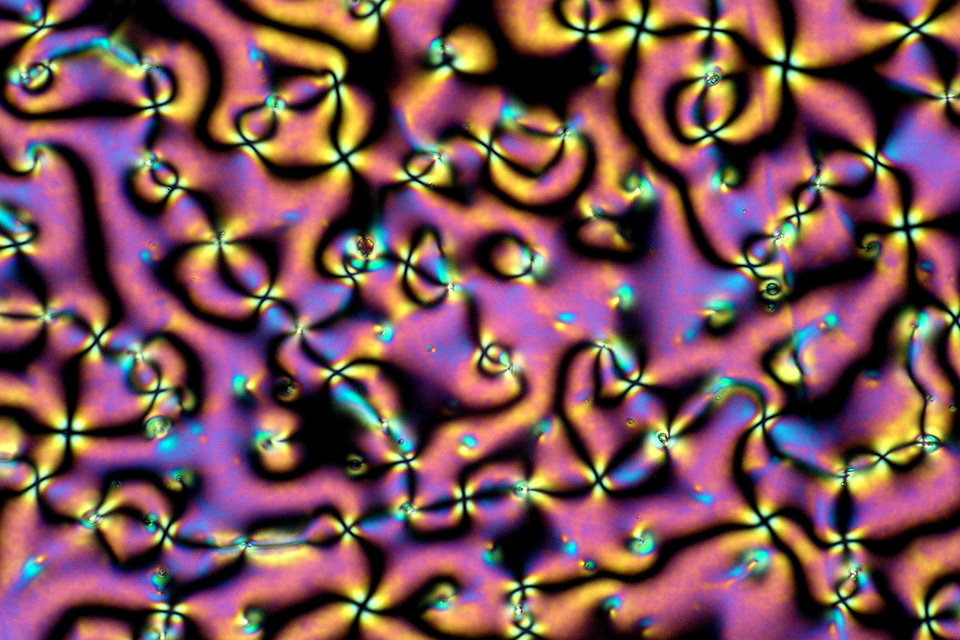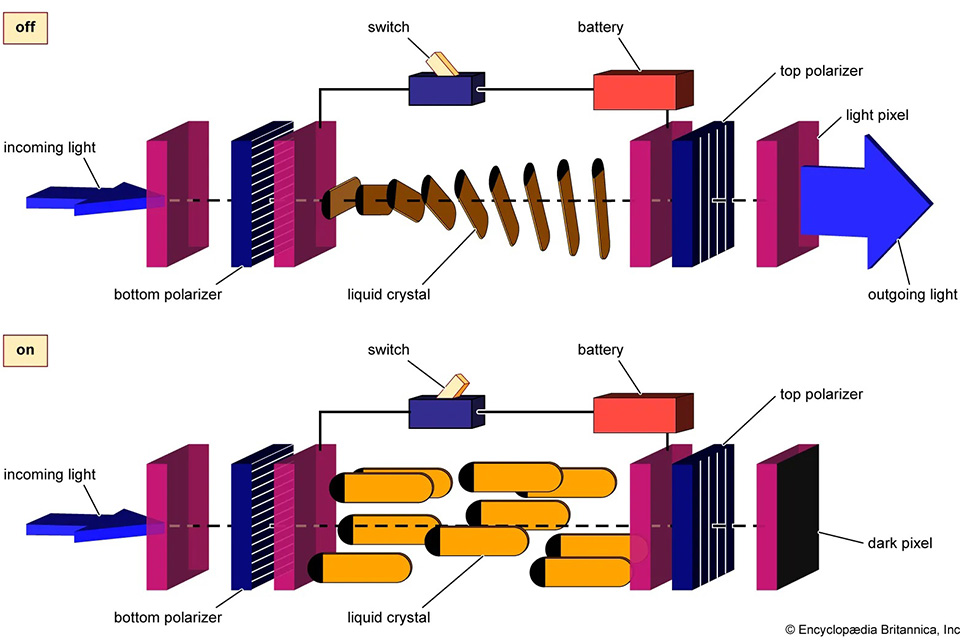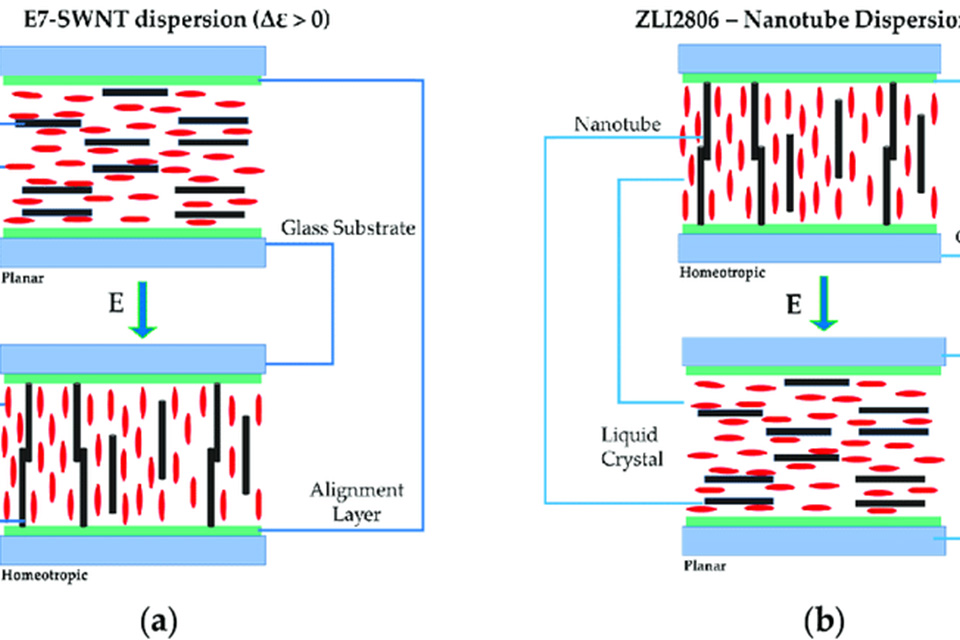From smartphones to TVs, liquid crystal displays (LCDs) are ubiquitous in modern life. But what are liquid crystals, and how do they work within an LCD to create the images we see? This article explores the fascinating world of liquid crystal displays, diving into the science behind this display technology, examining the different types of liquid crystals, and explaining how they are used in LCDs to produce vibrant visuals. If you've ever wondered about the inner workings of your screens, this is your comprehensive guide to liquid crystal displays.
Liquid crystals are a unique state of matter that exhibits properties of both liquid and solid crystals. Unlike a typical liquid that flows freely and has no long-range order, liquid crystals possess some degree of molecular order, similar to solid crystals. This intermediate state allows them to be influenced by external factors like temperature and electric field, making them ideal for display devices. They are often described as being in a mesophase.
The molecules in a liquid are randomly oriented, while the molecules in a solid crystal are arranged in a highly ordered, repeating pattern. Liquid crystals fall somewhere in between, with molecules that can flow like a liquid but also exhibit some degree of alignment. Therefore, liquid crystals are like a liquid that exhibits long range orientational order, but they are not liquid organic material.
Liquid crystals are not liquid in the conventional sense. They flow like a liquid, but their molecular structure possesses an organized arrangement more akin to a solid crystal. It's this unique combination of properties that enables them to manipulate light, which is the basis of their function in lcds. The behavior of these crystals and liquid enables the lcd display to show an image.

The discovery of liquid crystals dates back to 1888 when Austrian botanist Friedrich Reinitzer observed unusual behavior in a cholesteric liquid. While studying cholesteryl benzoate, he noticed that the substance exhibited two distinct melting points. At one temperature, it melted into a cloudy liquid, and at a higher temperature, it transitioned into a clear liquid. This phenomenon puzzled Reinitzer, as it defied the conventional understanding of phase transitions.
Further research by German physicist Otto Lehmann revealed that the cloudy liquid possessed properties intermediate between those of a liquid and a solid crystal, hence the term "liquid crystals". Lehmann coined the term "liquid crystals" to describe these peculiar substances. This marked the beginning of the history of liquid crystals, although their practical applications wouldn't be realized for several decades. The history of liquid-crystal displays is full of unexpected twists and turns.
The initial discovery was largely considered a scientific curiosity. It wasn't until the mid-20th century that the potential of liquid crystals for electronic display applications was recognized, paving the way for the development of the first lcd. However, the actual birth of the first lcd display would have to wait until the late 1960s. The substance behaved both like a liquid, and like a crystal, but the significance of liquid behavior was unknown.
There are several different families of liquid crystals, each with its unique molecular structure and properties. The most common types of liquid crystals used in lcds are nematic liquid crystals, smectic liquid crystals, and cholesteric liquid crystals. The liquid crystal phase is characterized by the arrangement of molecules.
Nematic liquid crystals are characterized by their long-range orientational order. Their molecules tend to align in a preferred direction, but they do not exhibit positional order. Nematic liquid crystals are typically used in lcds due to their fast response times and ease of alignment with an electric field. A specific example of nematic lcd is tn liquid crystal.
Smectic liquid crystals exhibit both orientational and positional order. Their molecules are arranged in layers, with each layer having a preferred orientation. Smectic phases are more viscous than nematic phases and exhibit slower response times.
Cholesteric liquid crystals (also known as chiral nematic) possess a helical structure. Their molecules are arranged in layers, with the orientation of each layer slightly twisted relative to the layers above and below. This twisting results in a periodic structure that can selectively reflect light.
In addition to these, lyotropic liquid crystals also exist, typically forming in solutions with a solvent. Some also categorize ferroelectric liquid crystal as a unique type. Therefore, there are different families of liquid crystals.
The core principle behind an lcd is the ability of liquid crystals to modulate light transmission under the influence of an electric field. An lcd display panel comprises a liquid crystal layer sandwiched between two polarized glass plates. The alignment of the liquid crystal is carefully controlled to manipulate the polarization of light passing through the display panel.
When light enters the first polarizer, it becomes polarized in a specific direction. This polarized light then passes through the liquid crystal. The electric field is applied, and the molecules twist, rotating the polarization of the light passes through them. The second polarizer is oriented perpendicular to the first, such that it blocks light that has not been rotated. However, when an electric field is applied, the liquid crystal molecules align, allowing light to pass through the second polarizer.
By controlling the electric field applied to each pixel, the amount of light transmitted can be precisely regulated, creating different shades of gray or colors. Color lcd systems color lcd systems use red, green, and blue filters to create a full-color image. In essence, the thin layer of liquid crystal acts as a light valve.

The twisted nematic (TN) lcd is one of the most commonly used lcs type of liquid crystal display. In a TN display, the liquid crystal molecules are arranged in a helical structure that twists the polarization of light by 90 degrees. When no electric field is applied, the polarized light passes through the liquid crystal layer, following the twist of the molecules. This allows the light to pass through the second polarizer, and the pixel appears bright.
When an electric field is applied, the TN liquid crystals are known to untwist, aligning parallel to the electric field. This prevents the light from being rotated, and it is blocked by the second polarizer, making the pixel appear dark. The TN displays rely on the rotation of TN liquid by 90 degrees, so it is important to have the correct composition of the liquid crystal.
TN lcds are simple and relatively inexpensive to manufacture, but they can suffer from limited viewing angles and color accuracy. Despite these limitations, they remain a popular choice for many applications due to their fast response times, particularly in gaming monitors. Modern TN displays typically have response times of 1 ms or less. The crystals are used in liquid panels.
The electric field is the key to controlling the alignment of liquid crystals in an lcd. Without an electric field, the liquid crystal molecules are arranged in their default configuration, which could be twisted (as in TN displays) or aligned in a specific direction. However, when an electric field is applied, the liquid crystals respond by aligning themselves with the field.
The strength of the electric field determines the degree of alignment. A stronger electric field will cause the liquid crystals to align more completely, allowing more light to pass through (or be blocked, depending on the display type). By precisely controlling the electric field applied to each pixel, the lcd can create a wide range of grayscale values.
The electric field is used to generate the image you see, and allows the alignment of the liquid crystal to rotate, changing the amount of light passes through. Furthermore, the uniformity of the electric field is critical for achieving consistent display performance, as variations in the field can lead to uneven brightness or color.
LCDs are not emissive display types; they do not produce light themselves. Instead, they rely on a lcd backlight to illuminate the liquid crystal panel and make the image visible. The layer of liquid crystal modulates the intensity of the light used along the liquid crystal layer. Without a lcd backlight, the lcd would be dark and invisible.
Various types of lcd backlight are used, including cold cathode fluorescent lamps (CCFLs), light-emitting diodes (LEDs), and quantum dots (QLEDs). CCFLs were commonly used in older lcd monitors and lcd tvs, but LEDs have become the dominant lcd backlight technology due to their energy efficiency, longer lifespan, and smaller size.
LED backlights can be arranged in different configurations, such as edge-lit and direct-lit. Edge-lit backlights place LEDs along the edges of the display, while direct-lit backlights place LEDs behind the entire display panel. QLED backlights use quantum dots to enhance color accuracy and brightness.
LCDs have several advantages compared to other display technologies, such as cathode ray tubes (CRTs) and plasma displays. LCDs are thinner, lighter, and consume less power than CRTs. They also offer better image sharpness and geometric accuracy. Compared to plasma displays, lcds are more energy-efficient and do not suffer from burn-in.
However, lcds also have some disadvantages. Their contrast ratio and viewing angles are typically inferior to those of OLED display technologies. LCDs also require a lcd backlight, which can add to their thickness and power consumption.
Despite these limitations, lcd technology remains a dominant force in the display market due to its mature technology, relatively low cost, and wide range of available sizes and resolutions. The lcd screen is used in various devices, making them a great choice.

While liquid crystal display are best known for their use in televisions and computer monitors, lcds are used in a wide variety of other applications. These include smartphones, tablets, laptops, digital cameras, portable gaming devices, and instrument panels in cars and airplanes. The liquid crystal is used because of its ability to manipulate the passage of light.
LCDs are also used in lcds in medical equipment, industrial control panels, and point-of-sale terminals. Their versatility, low power consumption, and compact size make them suitable for a wide range of electronic display applications.
Beyond that, LCDs have also been used in projectors and head-mounted displays. Even small watches and calculators use liquid crystals.
Despite the rise of OLED and microLED display technologies, lcd technology continues to evolve and improve. Current trends in lcd development include higher resolutions (4K and 8K), wider color gamuts, improved viewing angles, and thinner designs.
Quantum dot technology is being increasingly used in liquid crystal displays to enhance color accuracy and brightness. Mini-LED backlights are also gaining traction, offering improved contrast ratios and local dimming capabilities.
Another area of development is flexible lcds, which could enable new form factors and applications. However, the challenges of manufacturing flexible liquid crystal display remain significant. Continued innovation in materials, manufacturing processes, and lcd backlight technologies will ensure that lcds remain a competitive display device for years to come.
Here's a table summarizing the different types of liquid crystals:
|
||||||||||||||||||||
|---|---|---|---|---|---|---|---|---|---|---|---|---|---|---|---|---|---|---|---|---|
Here's a second table comparing LCDs to OLED displays:
| Feature | LCD | OLED |
|---|---|---|
| Light Source | Backlight (LED, CCFL, etc.) | Emissive (each pixel emits light) |
| Contrast Ratio | Good (can be improved with local dimming) | Excellent (infinite contrast ratio theoretically) |
| Viewing Angles | Can be limited, varies by technology | Wide viewing angles |
| Black Levels | Not as deep as OLED | True blacks |
| Response Time | Good to Very Good, depending on technology | Very Fast |
| Energy Efficiency | Good | Can vary, generally better for dark scenes |
| Manufacturing Cost | Relatively Low | Higher |
Contact: David
Phone: +8618665976986
Tel: +8675521563288
Email: [email protected]
Add: 305 Room A Buiding Huafeng International Robot Industrial Park Xixiang Bao'an